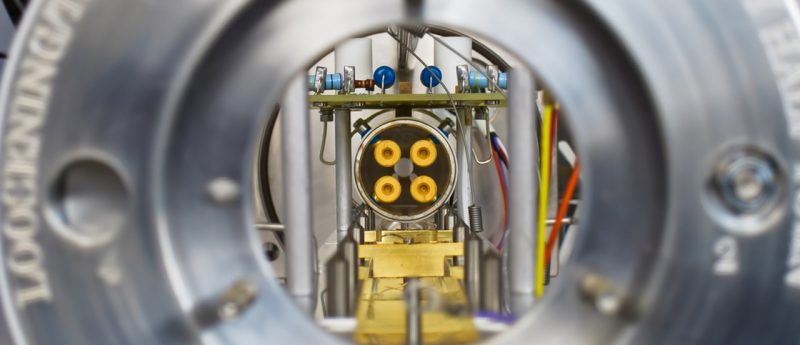Scientists in Russia develop a device for upgrading mass spectrometers and a novel biomarker is detected for the identification of the ‘window of opportunity’ for cancer chemotherapy timing

The week in brief:
♦ Researchers from Russia have developed a device for upgrading mass spectrometers
Russian scientists develop device for upgrading mass spectrometers
Rhiannon Finnie (Future Science Group)
Researchers from Skoltech (Moscow, Russia) and MIPT (Moscow, Russia) have recently published a paper in Analytical Chemistry describing a new device designed for upgrading mass spectrometers. The new device is reported to be able to analyze one substance from four different perspectives. Additionally, it enables multiple samples to be examined simultaneously.
A mass spectrometer has three basic components: the ion source, the mass analyzer and a detector which records the information. The ion source is the element reported to have been redefined by the researchers in their mass spectrometer.
The proposed device makes use of four techniques for ionization, but the associated processes occur independently in separate spaces, so as not to affect one another. A further benefit of this modular design is that the device can accommodate even more ionizers. The authors have reported their mass spectrometer, with this ‘four-in-one’ ion source, can switch between modes in a second, meaning separate experiments can be conducted simultaneously.
The device can also be used to analyze one substance in detail by using all ionizers on it at once. For this method, the mixture in one ionization channel can be used as a reference sample, while the remaining channels accommodate molecular reactions such as deuteration or ozonation.
The authors have demonstrated their device can simultaneously analyze oil and biological molecules, as well as support deuteration, suggesting it has the potential for widespread scientific and industrial applications.
Sources: Kostyukevich Y, Nikolaev E. Ion Source Multiplexing on a Single Mass Spectrometer. Anal. Chem. doi: 10.1021/acs.analchem.8b00027 (2018) (Epub ahead of print); https://mipt.ru/english/news/four_in_one_chemical_analysis_technique_gets_major_upgrade_from_russian_scientists
♦
Novel biomarker for the identification of the ‘window of opportunity’ for cancer chemotherapy timing
Sarah Jones (Future Science Group)
Tumor growth is dependent on angiogenesis. A new study has identified a vascular stabilization marker that could be used for the visualization of blood vessel activity, allowing the timing of anticancer therapies to be optimized.
Nobuyuki Takakura, Professor at Osaka University (Japan), explained that angiogenesis inhibitors are showing promise in improving chemotherapy but that it is important to identify the ‘window of opportunity’ to allow maximum efficiency of this treatment. Biomarkers of this phase of tumor development are therefore essential.
Results published in the American Journal of Pathology suggested that active proliferating vascular endothelial cells and dormant cells could be distinguished by PSF1 promoter activity in mice.
Expression of a cell surface protein, CD109, was also found to be correlated with normalized or silenced blood vessels in the tumor vasculature. These findings allowed researchers to distinguish between proangiogenic ECs and quiescent ECs by their PSF1 gene promoter activity and CD109 expression.
“Since CD109 is highly expressed in dormant ECs, we suggest it can be used to detect normalized blood vessels, thus allowing identification of the ‘window of opportunity’ for optimal delivery of chemotherapeutics,” remarked Takakura.
Source: Yamakawa D, Jia W, Kidoya H, Hosojima S, Torigata M, Zhang L, Takakura N. Visualization of Proliferative Vascular Endothelial Cells in Tumors in Vivo by Imaging Their Partner of Sld5-1 Promoter Activity. Am. J. Pathol. doi: https://doi.org/10.1016/j.ajpath.2018.01.015 (2018) (Epub ahead of print); www.eurekalert.org/pub_releases/2018-04/e-bhi040518.php
